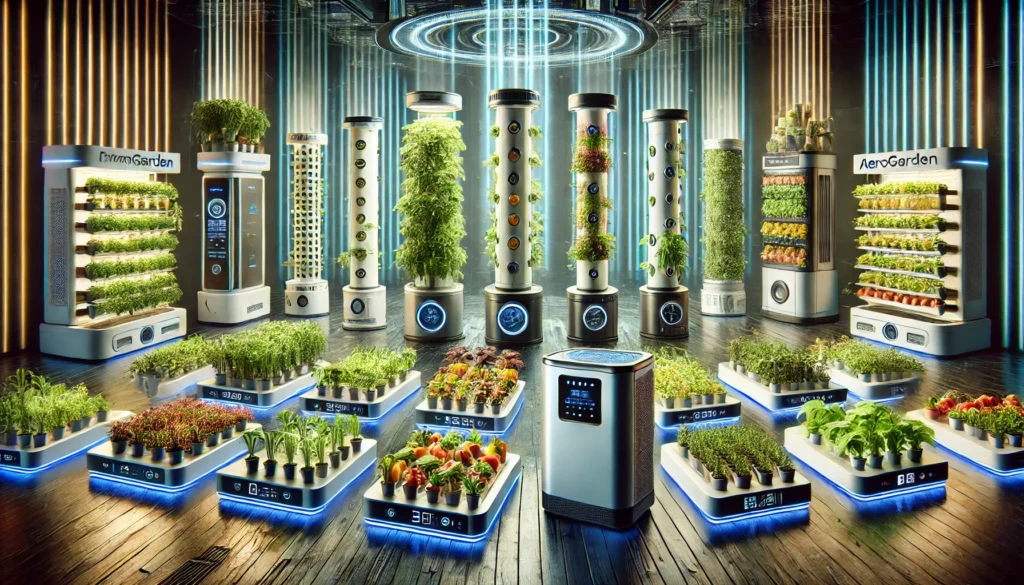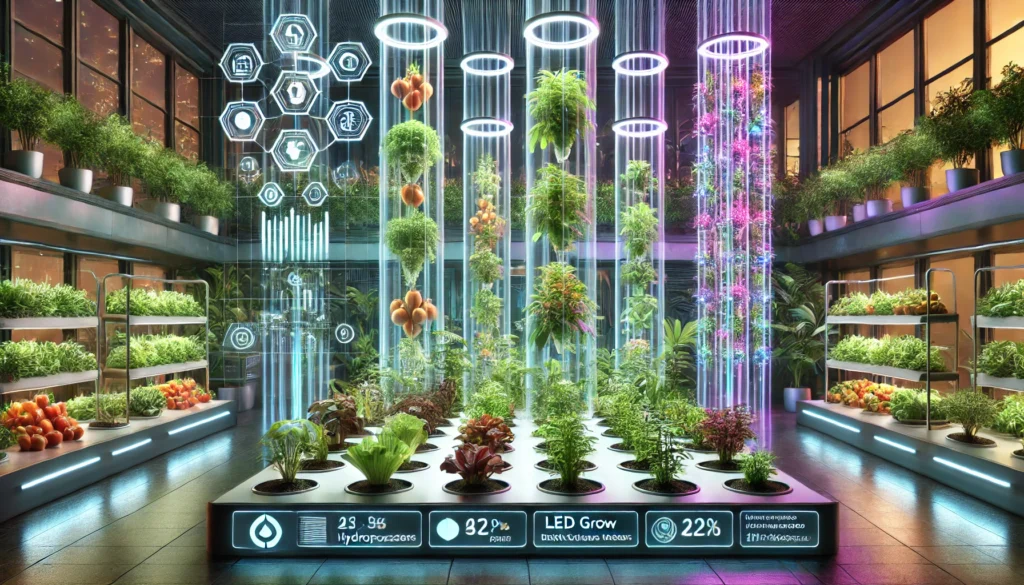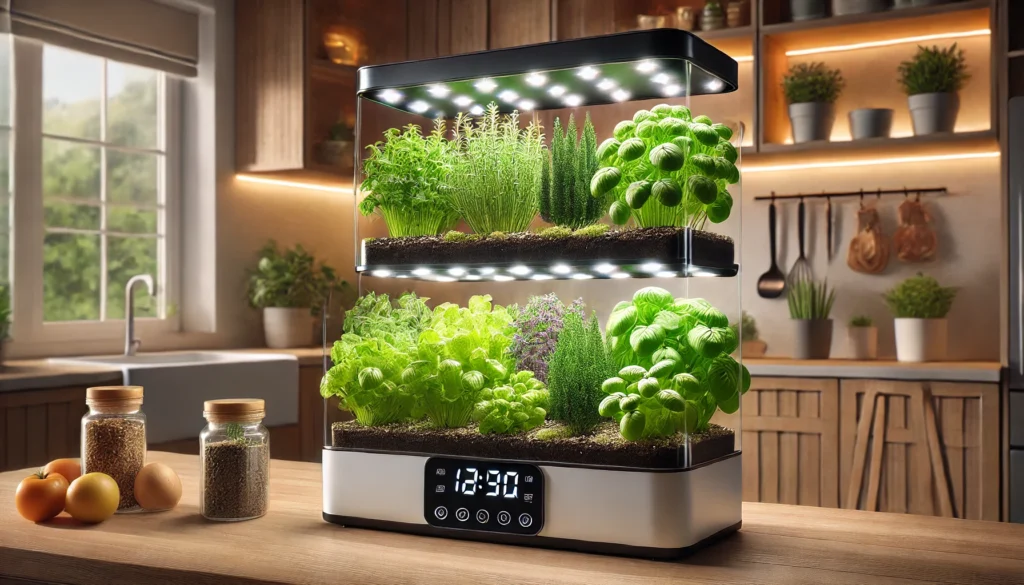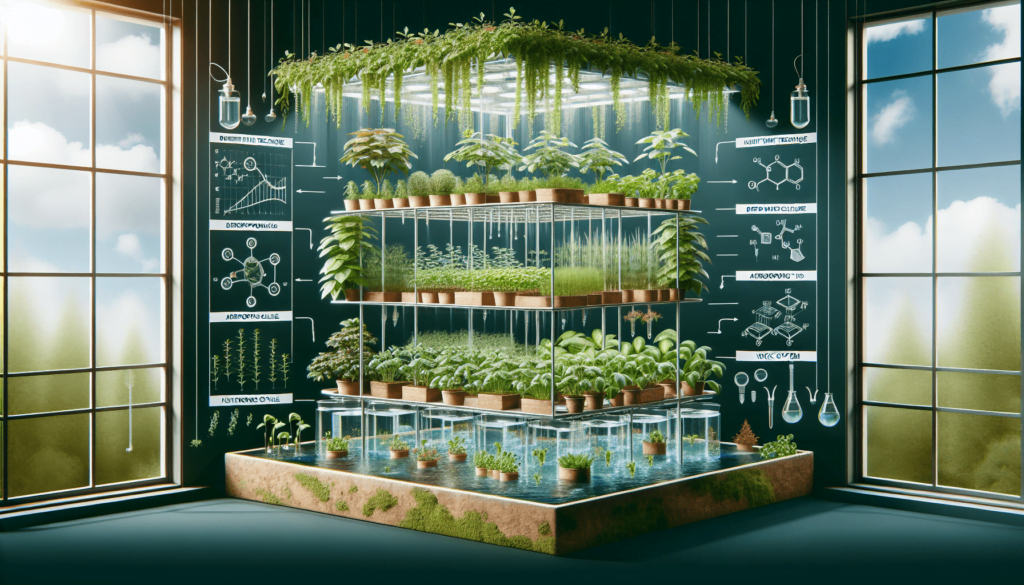If you’ve heard the news, it might have felt like a punch to the gut—AeroGarden has officially closed its doors. For many home gardeners and hydroponics enthusiasts, this is more than just a business decision; it’s the end of an era. AeroGarden was one of the most recognizable brands in the indoor gardening and hydroponics space, known for making it easy for anyone, no matter their green thumb status, to grow fresh herbs, vegetables, and flowers right in their kitchens. So, what happened, and what does this mean for those of us who love our hydroponics? Let’s dig in.
![]()
A Brief Look Back: AeroGarden’s Legacy
For almost two decades, AeroGarden was at the forefront of at-home hydroponics. They gave countless households a convenient, soil-free way to grow fresh herbs, greens, and even small vegetables year-round. With their easy-to-use systems, AeroGarden brought hydroponics to people who would have otherwise never considered growing their own produce. The beauty of AeroGarden systems was their simplicity—all you had to do was add water, plant food, and seeds, and the compact system took care of the rest, ensuring the right amount of light and nutrients.
Their success wasn’t just about hydroponics; it was about convenience and control. The LED grow lights, built-in timers, and nutrient packs made everything foolproof, which is why their systems found a loyal place in kitchens worldwide. They truly brought a piece of farm life to even the smallest urban apartments. So, it’s no wonder the news of AeroGarden’s closure has left so many people disappointed and, frankly, confused.

Why Did AeroGarden Close?
AeroGarden was once a success story, but like many businesses, they faced challenges. There’s no single reason why they’ve closed, but rather a combination of factors. Let’s look at some of the possibilities that contributed to this unfortunate decision.
1. Increased Competition in the Hydroponics Market
In recent years, the hydroponics market has become crowded. AeroGarden was a pioneer, but they were no longer the only option for at-home growers. Companies like Click and Grow, Rise Gardens, and even smaller niche brands started to flood the market, each bringing something unique to the table—whether it was a more stylish design, better energy efficiency, or a wider variety of plants to grow. If you want to explore other top hydroponic systems for home use, there are many alternatives available.
The competition wasn’t just on quality, though. Price points varied, and some newer brands offered cheaper alternatives that promised similar or even better results. With more choices available, customers had options that fit their individual needs better, leaving AeroGarden struggling to keep its market share.
2. Economic Pressures
The rising costs of production, logistics, and labor may have also played a significant role in the closure. As inflation soared, many companies, including AeroGarden, faced a squeeze on profitability. Hydroponics equipment relies on a steady supply of high-quality LED lights, electronics, and other components, which were all impacted by supply chain disruptions and increased manufacturing costs.
The pandemic certainly changed how people viewed their food supply and home gardening. It brought a surge of new interest to indoor gardening, but it also introduced challenges. With soaring prices for parts and materials, AeroGarden may have struggled to maintain profitability while trying to keep their products accessible to consumers.
3. Shifts in Consumer Interest
The shift in consumer interest has also played a part. While hydroponics remains popular, the do-it-yourself (DIY) movement has gained traction, with many people exploring alternative hydroponics systems that they could build themselves. As home gardening enthusiasts became more educated on the benefits and techniques of hydroponics, some found that buying materials and building custom systems was more economical and allowed for a more tailored experience. For more information on DIY hydroponic projects, check out our guide on key tools and equipment.
The rise of smart gardening technology has also played a role. AeroGarden focused heavily on ease of use and simplicity, but the more tech-savvy among us wanted more control—like app integration, remote monitoring, and automation. Companies that offered these advanced features saw an increasing demand that AeroGarden couldn’t keep up with.
What Does This Mean for Hydroponics Enthusiasts?
If you’ve already got an AeroGarden, or if you’re just passionate about hydroponics in general, you’re probably wondering what this closure means for you. Well, it’s not all doom and gloom. In fact, there are some silver linings to consider.
1. Plenty of Alternatives
Just because AeroGarden has closed doesn’t mean the hydroponics fun has to stop. There are plenty of other brands out there that offer similar, if not better, products. If you’re looking for an AeroGarden alternative, here are a few options worth considering:
- Click and Grow: This brand is a favorite for its sleek design and easy-to-use system, much like AeroGarden. It focuses on simplicity, which is perfect for beginners.
- Rise Gardens: For those looking to expand into more serious indoor gardening, Rise Gardens offers scalable systems that grow with you.
- iDOO and Moistenland: These brands are on the budget-friendly side and are great for those who are just getting started with hydroponics.
For more options, you can explore our list of innovative hydroponic gardening ideas.
Each of these brands offers a different experience, and with AeroGarden’s absence, it’s a great time to experiment with something new to find what works best for you.
2. DIY Hydroponics
The closure of AeroGarden could also encourage more people to try their hand at DIY hydroponics. If you’ve gotten used to the benefits of growing your own herbs and veggies but aren’t sure about the alternatives, building your own hydroponics system could be the perfect solution. With a few simple tools and some basic knowledge, you can set up a system that provides the same benefits as an AeroGarden—and possibly even more. Check out our step-by-step guide to setting up a hydroponic research system for more information.
A basic DIY hydroponics setup can be as simple as a container, an air pump, and a nutrient solution. And for those who love to get creative, there are countless ways to customize your setup to suit your space, style, and the types of plants you want to grow. The DIY route gives you complete control over the process and can save you money in the long run.
3. Support for Existing AeroGardens
If you currently have an AeroGarden system, don’t worry—it’s not suddenly going to become useless. Most of the parts, like the LED lights and pumps, can be found online or substituted with compatible alternatives. Nutrient solutions are also widely available from other hydroponics suppliers. The hydroponics community is tight-knit, and you can find plenty of advice and guides to help keep your AeroGarden system running smoothly.
Plus, you’re not alone in this. Many other hydroponics enthusiasts are in the same boat, and online communities are already buzzing with ways to keep AeroGardens operational despite the closure. Forums and social media groups are excellent places to find support, troubleshoot issues, and even source parts from fellow AeroGarden fans. For troubleshooting tips, check out our guide on resolving leaks in your hydroponic system.

The Future of Hydroponics: A Bright Horizon
The closing of AeroGarden doesn’t signal the end of hydroponics. In fact, the interest in sustainable, soil-free growing continues to rise, especially as more people become aware of the benefits of growing their own food at home. The convenience, control, and satisfaction that comes with indoor gardening are still very much alive.
The hydroponics industry is evolving, and the landscape is changing to include even more innovative products and solutions. Companies are working on integrating smart technology, automation, and more efficient energy use into hydroponics systems. As the demand for fresh, locally grown produce increases, we can expect to see new and improved hydroponics solutions that address the limitations of older models. If you’re interested in learning about the future of hydroponic farming, our article covers some of the exciting advancements on the horizon.
In addition to technological advancements, there is also a growing focus on education and accessibility. Hydroponics is becoming more mainstream, and with that comes the opportunity for more people to learn about and try it. Workshops, online courses, and community initiatives are making it easier for anyone to get started with hydroponics, no matter their experience level.
Conclusion
The news of AeroGarden’s closure might have caught you off guard, but it’s important to remember that hydroponics as a concept is here to stay. AeroGarden was an iconic brand that brought hydroponics into homes across the world, but their departure from the market doesn’t mean the end of at-home hydroponic gardening.
There are still plenty of options out there—whether you’re interested in exploring alternative brands, experimenting with DIY hydroponics, or simply keeping your existing AeroGarden running smoothly. The hydroponics community is resilient, and this could be the push we need to try new things, learn new skills, and innovate.
So, take a moment to appreciate what AeroGarden has done for us, but don’t stop there. Keep growing, keep experimenting, and keep bringing the joy of fresh, homegrown produce into your life. Hydroponics has a bright future, and there’s no better time to be part of it.
Related Products…
-
 AeroGarden Bounty Elite – Stainless Steel Indoor Garden with LED Grow Light, WiFi, and Alexa Integration$472.00
AeroGarden Bounty Elite – Stainless Steel Indoor Garden with LED Grow Light, WiFi, and Alexa Integration$472.00 -
%22%20transform%3D%22translate(.6%20.6)%20scale(1.17188)%22%20fill-opacity%3D%22.5%22%3E%3Cellipse%20fill%3D%22%233f4812%22%20rx%3D%221%22%20ry%3D%221%22%20transform%3D%22matrix(21.82229%2089.70692%20-66.1653%2016.0955%2073.3%20168)%22%2F%3E%3Cpath%20fill%3D%22%23fff%22%20d%3D%22M178.2%20220.7L113.2-6l106.6-30.6%2065%20226.8z%22%2F%3E%3Cpath%20fill%3D%22%23e6e5f1%22%20d%3D%22M-48.6%209.8L88.6-48.5l36%2084.7-137.2%2058.3z%22%2F%3E%3Cellipse%20fill%3D%22%237b8b25%22%20cx%3D%2283%22%20cy%3D%22122%22%20rx%3D%2260%22%20ry%3D%2260%22%2F%3E%3C%2Fg%3E%3C%2Fsvg%3E) Bundle of iDOO Hydroponics Growing System: Automatic Timer, Water Pump, Integrated Fan, Indoor Herb Garden Kit with Replacement Seed Pod Kit Included$119.99
Bundle of iDOO Hydroponics Growing System: Automatic Timer, Water Pump, Integrated Fan, Indoor Herb Garden Kit with Replacement Seed Pod Kit Included$119.99 -
Product on sale
%22%20transform%3D%22translate(.6%20.6)%20scale(1.17188)%22%20fill-opacity%3D%22.5%22%3E%3Cellipse%20fill%3D%22%2332380c%22%20rx%3D%221%22%20ry%3D%221%22%20transform%3D%22matrix(3.4334%20-131.11628%2074.40252%201.9483%2069.8%20208.7)%22%2F%3E%3Cellipse%20fill%3D%22%23fff%22%20rx%3D%221%22%20ry%3D%221%22%20transform%3D%22matrix(-40.3303%20-251.79052%2069.12625%20-11.07223%20216.4%20123.9)%22%2F%3E%3Cellipse%20fill%3D%22%23f5f2fd%22%20cx%3D%22100%22%20cy%3D%2226%22%20rx%3D%22255%22%20ry%3D%2236%22%2F%3E%3Cellipse%20fill%3D%22%2383942a%22%20cx%3D%2281%22%20cy%3D%22120%22%20rx%3D%2262%22%20ry%3D%2262%22%2F%3E%3C%2Fg%3E%3C%2Fsvg%3E) iDOO Hydroponic Indoor Garden Kit with 12 Pods, LED Grow Light, Perfect Gift for Plant Lovers, Equipped with Built-in Fan, Auto-Timer, and Adjustable Height up…Original price was: $99.99.$89.99Current price is: $89.99.
iDOO Hydroponic Indoor Garden Kit with 12 Pods, LED Grow Light, Perfect Gift for Plant Lovers, Equipped with Built-in Fan, Auto-Timer, and Adjustable Height up…Original price was: $99.99.$89.99Current price is: $89.99.
Forum
Got something to share or a question to ask? Jump in and start a conversation! Whether it’s tips, advice, or just sharing your experiences, we’d love to hear from you. Don’t be shy—your input could inspire or help someone else!- This forum has 1 topic, and was last updated 10 months, 1 week ago by .
- Topic
- Voices
- Last Post
- You must be logged in to create new topics.






